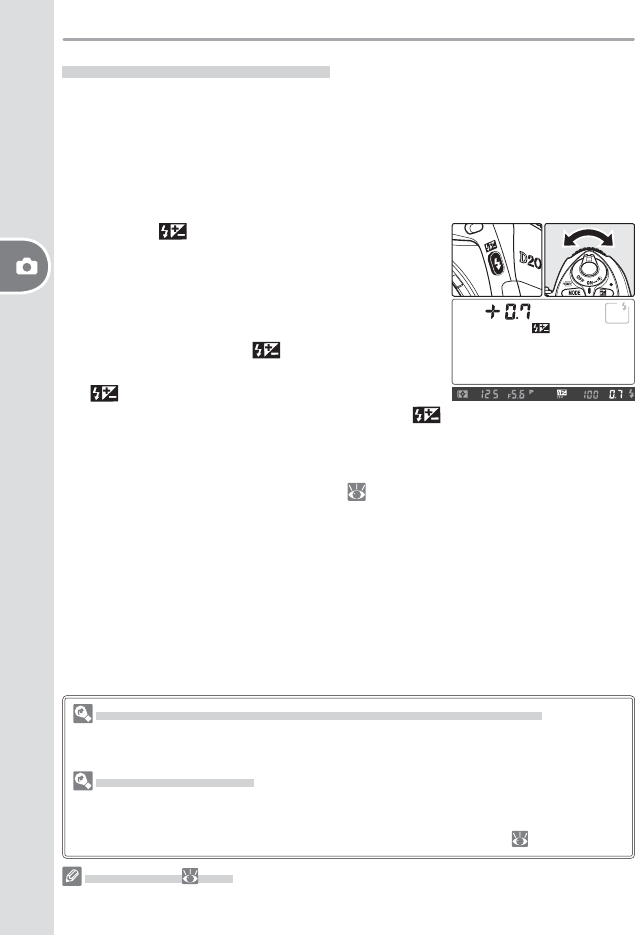
80
Reference—Flash Photography
Flash Exposure Compensation
Flash exposure compensation can be used to increase or reduce fl ash output
from the level chosen by the camera’s fl ash control system. Flash output can
be increased to make the main subject appear brighter, or reduced to prevent
unwanted highlights or refl ections. As a rule of thumb, positive compensation
may be needed when the main subject is darker than the background, negative
compensation when the main subject is brighter than the background.
Pressing the
button, rotate the sub-command
dial and confi rm fl ash exposure compensation in the
control panel or viewfi nder. Flash exposure compen-
sation can be set to values between –3 EV (darker)
and +1 EV (brighter) in increments of / EV.
At values other than ±0, a icon will be displayed
in the control panel and viewfi nder after you release
the button. The current value for fl ash exposure
compensation can be confi rmed by pressing the
button.
Normal fl ash output can be restored by setting fl ash exposure compensation to
±0.0 or performing a two button reset ( 97). Flash exposure compensation is
not reset when the camera is turned off .
Using Flash Exposure Compensation with Optional Speedlights
Flash exposure compensation is also available when an optional SB-800 or SB-600
Speedlight is attached.
Modeling Illumination
The built-in fl ash and optional SB-800, SB-600, and SB-R200 Speedlights emit a model-
ing fl ash when the camera depth-of-fi eld preview button is pressed. Modeling illumi-
nation can be turned off using Custom Setting e4 (Modeling Flash; 166).
b3—EV Step ( 154)
This option can be used to set the increments for fl ash compensation to / or 1 EV.


















